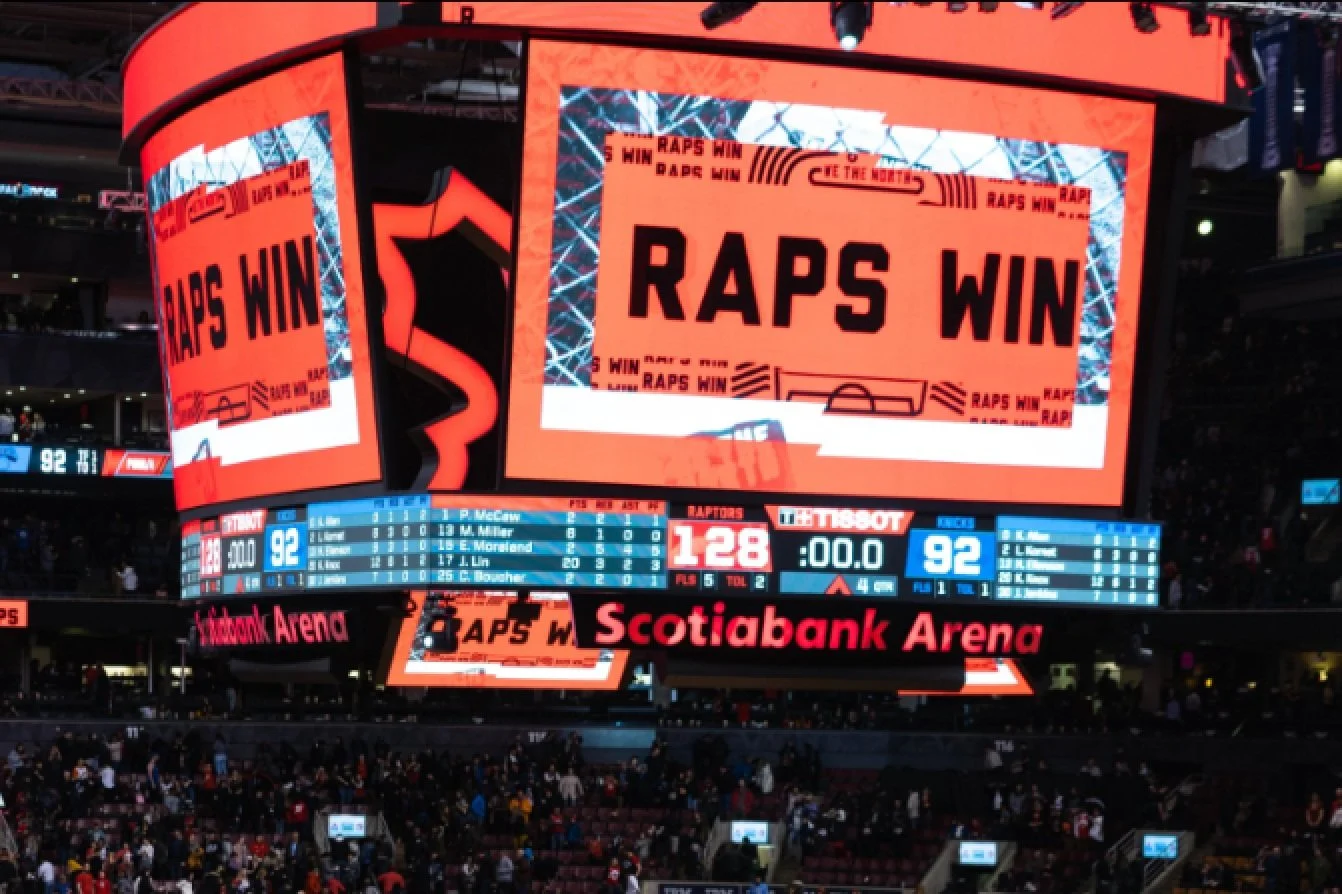Raptors Win but Trademark still under Claw
Well, that’s a Rap! The Toronto Raptors make history and take home the NBA championship against the Golden State Warriors, putting The Six and The North at the forefront of basketball (a sport invented by a Canadian!) while uniting Canada, the U.S. and the rest of the world with it.
The NBA organization, however, still has another court battle to win.
Instead of a rival basketball team, the Raptors are facing off against the famous energy drink Monster, who claim the Raptors’ logo – featuring a clawed-up basketball – is confusing and similar to theirs. A no, no under intellectual property trademark laws.
Looking back at the brand’s history, the Raptors were warmly welcomed in Toronto and across Canada when they premiered in the 1995 NBA season, bringing basketball back to the city for the first time in fifty years. The team emerged amidst the hype of the Jurassic Park movie. It piggybacked on the film’s success and popularity of dinosaurs among 90’s youth when creating their original logo – a dinosaur dribbling a basketball. The new team’s primarily purple gear was sought after, with over $20 million in merchandise purchased in the first month. By the end of 1994, before even playing their first game, their trademark was hot on the market, and the Raptors were seventh in the league in merchandise sales. Effective branding sells!
However, the real heat around the Raptors trademark rights began shortly after the team unveiled their rebrand in 2014, the brainchild of Canadian creative services firm Sid Lee and famed Toronto-born rapper Drake. The new brand included the team’s new logo, described as “a circular shield with a ball torn by the unmistakable attack of a Raptor,” which they do not own a federal trademark registration for in Canada or the U.S.
The Raptors then filed 18 trademark applications with the United States Patent Trademark Office (USPTO) around the new logo. However, Monster Energy clawed back in 2015, filing oppositions which allege the Raptors’ logo is essentially too similar to the energy drink’s own logo – which features three jagged vertical gashes.
The case is still ongoing, with the USPTO case documents showing many time extensions filed, indicating the parties have likely attempted to settle the dispute with no resolution to date.
Maple Leaf Sports, who own the Raptors, have defended their trademark rights ferociously for the past four years, arguing that the new logo is an evolution of the original one and is “the same or substantially the same.” Last month, Monster moved to block the Raptors’ argument that the similarity to their original logo would preclude Monster from protesting their new logo, claiming the claws in each of the Raptors’ logos are too different for one to be a relative of the other. However, many in the sports and legal worlds have noted and argued that various claws are used in many trademarked logos, which may favour the Raptors.
While it is likely the two organizations will settle with a partnership agreement and/or price tag, it may come down to a judge deciding if consumers would likely be confused by the similar logos to equate them as being from the same source. At best, the outcome could bring a different kind of win for the Raptors and a stop to Monster’s Kawhi-ning; at worst, this could result in the Raptors relinquishing a logo that has served as an idol to the proudly WE THE NORTH, WINNING TEAM!
Athena Innovation & Legal
Interested in learning more about trademarks and the raptors? Check out our blog post on “Clawing Deeper into the Monster v. Raptors Trademark Battle.”
On our blog, we provide an extensive range of information about trademarks. We delve into detailed explanations of complex concepts and offer insights from our team of experienced lawyers. Our content is highly informative and invaluable in gaining a deeper understanding of trademarks. To access our resources, click the button below and start exploring.
**The information provided herein is a general background of contractual, technology and intellectual property law concepts. It does not constitute legal advice, and should not be relied upon as legal advice. Athena Innovation & Legal, nor the author, make no express or implied representations or warranties in respect of the information, including but not limited to the accuracy of the information.**

